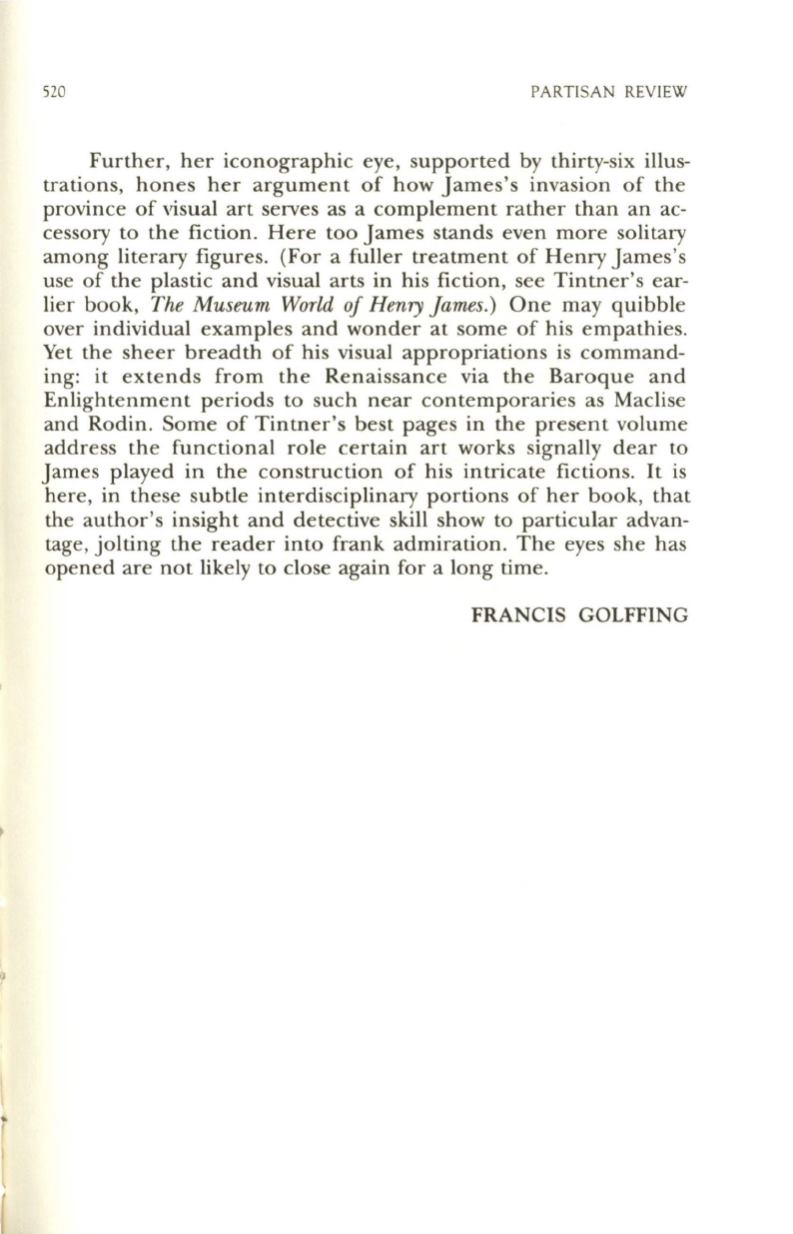
520
PARTISAN REVIEW
Further, her iconographic eye, supported by thirty-six illus–
trations, hones her argument of how James's invasion of the
province of visual art serves as a complement rather than an ac–
cessory to the fiction. Here too James stands even more solitary
among literary figures. (For a fuller treatment of Henry James's
use of the plastic and visual arts in his fiction, see Tintner's ear–
lier book,
The Museum World of Henry James.)
One may quibble
over individual examples and wonder at some of his empathies.
Yet the sheer breadth of his visual appropriations is command–
ing: it extends from the Renaissance via the Baroque and
Enlightenment periods to such near contemporaries as Maclise
and Rodin. Some of Tintner's best pages in the present volume
address the functional role certain art works signally dear to
James played in the construction of his intricate fictions. It is
here, in these subtle interdisciplinary portions of her book, that
the author's insight and detective skill show to particular advan–
tage, jolting the reader into frank admiration. The eyes she has
opened are not likely to close again for a long time.
FRANCIS GOLFFING


